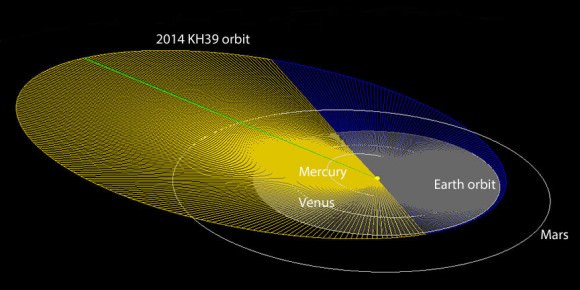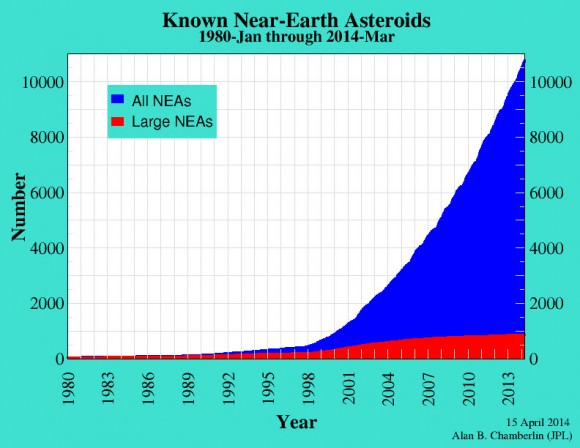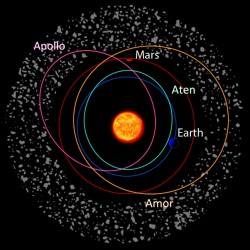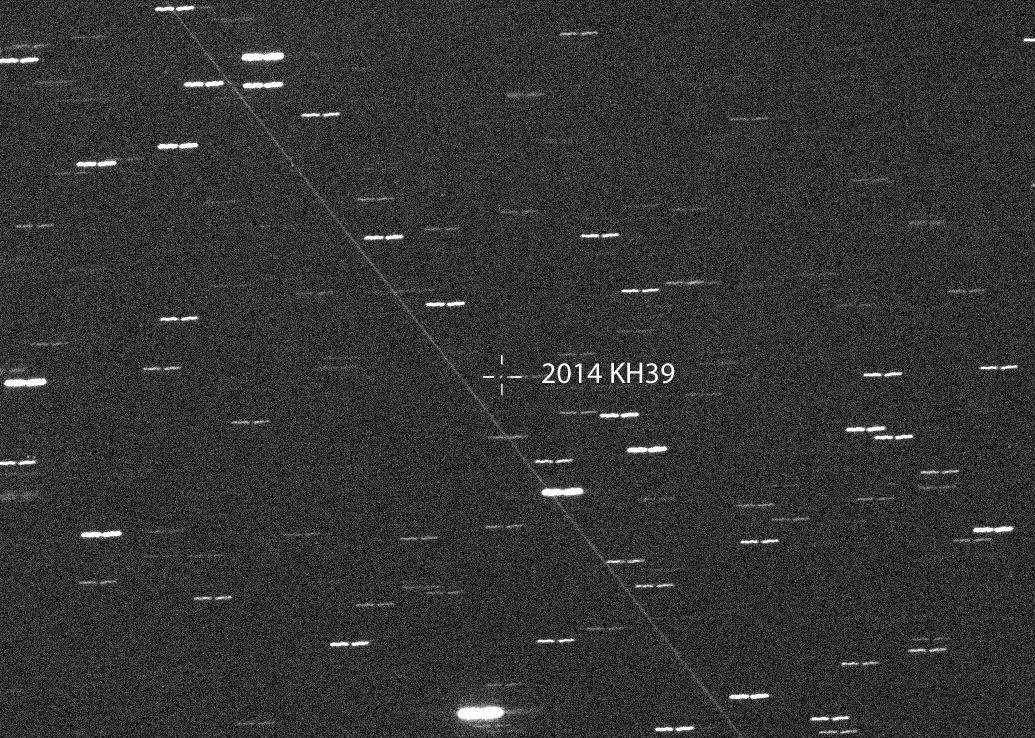Got any plans Tuesday? Good. Keep them but know this. That day around 3 p.m. CDT (20:00 UT) asteroid 2014 KH39 will silently zip by Earth at a distance of just 272,460 miles (438,480 km) or 1.14 LDs (lunar distance). Close as flybys go but not quite a record breaker. The hefty space rock will buzz across the constellation Cepheus at nearly 25,000 mph (11 km/sec) near the Little Dipper at the time.
Observers in central Europe and Africa will have dark skies for the event, however at magnitude +17 the asteroid will be too faint to spot in amateur telescopes. No worries. The Virtual Telescope Project, run by astrophysicist Gianluca Masi, will be up and running with real-time images and live commentary during the flyby. The webcast begins at 2:45 p.m. CDT June 3.
2014 KH39 was discovered on May 24 by Richard Kowalski of the Catalina Sky Survey. (Kowalski is the same astronomer who discovered asteroid 2008 TC3, the small asteroid that impacted in Sudan in 2008). Further observations by the CSS and additional telescopes like Pan-STARRS 1 in Hawaii nailed down its orbit as an Earth-approacher with an approximate size of 72 feet (22 meters). That’s a tad larger than the 65-foot Chelyabinsk asteroid that exploded into thousands of small stony meteorites over Russia in Feb. 2013.

Since this asteroid will safely miss Earth we have nothing to fear from the flyby. I only report it here to point out how common near-Earth asteroids are and how remarkable it is that we can spot them at all. While we’re a long ways from finding and tracking all potentially hazardous asteroids, dedicated sky surveys turn up dozens of close-approaches every year. On the heels of 2014 KH39, the Earth-approaching asteroid 2014 HQ124 will pass 3.3 LDs away 5 days later on June 8. With a diameter estimated at more than 2,100 feet (650-m) it’s expected to become as bright as magnitude +13.7. Southern hemisphere observers might track it with 8-inch and larger telescopes as its speeds across Horologium and Eridanus the morning before closest approach.

Perusing the current list of upcoming asteroid approaches, these two will be our closest visitors at least through early August. Near-Earth objects (NEOs) are comets and asteroids whose original orbits have been re-worked by the gravity of the planets – primarily Jupiter – into new orbits that allow them to approach relatively close to Earth. The ones we’re most concerned about are a subset called Potentially Hazardous Asteroids or PHAs, defined as objects that approach within 4.65 million miles (7.48 million km) of Earth and span 500 feet (150-m) across or larger. The key word here is ‘potential’. PHAs won’t necessarily hit the Earth – they only have the potential to do so over the vastness of time. On the bright side, PHAs make excellent targets for sampling missions.

As of May 30, 2014, 11,107 near-Earth objects have been discovered with 860 having a diameter of 1 km or larger. 1,481 of them have been further classified as potentially hazardous. NASA’s Near-Earth Object Program estimates that over 90% of NEOs larger than 1 km (the most potentially lethal to the planet) have been discovered and they’re now working to find 90% of those larger than 459 feet (140 meters) across. Little by little we’re getting to better know the neighborhood.
The probability that either 2014 KH39 and 2014 HQ124 will hit Earth on this round is zero. Nor do we know of any asteroid in the near future on a collision course with the planet. Enjoy the day.

